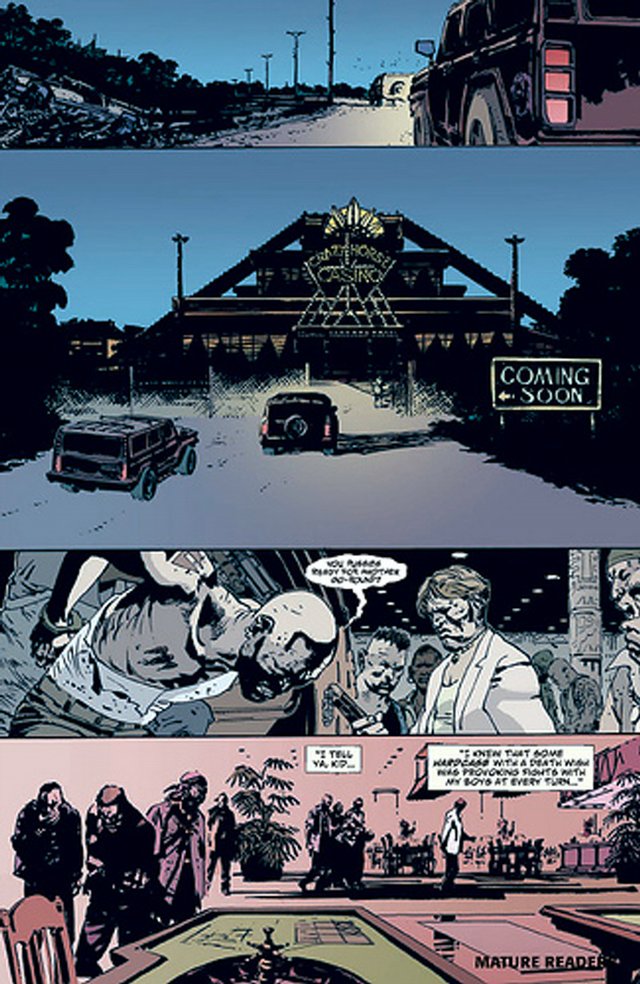Since the Prairie Rose reservation in SCALPED is really Pine Ridge, this is the casino the fictional Crazy Horse Casino must emulate:
Expansion creates new Prairie Wind Casino
It is not one of those megacasinos where the lights flash and traffic flows 24 hours a day, nor is it where the big entertainment tours stop, but it has an atmosphere that attracts people from the local area, mostly ranchers and tribal members. In season, tourists are routed to the casino.
After nearly two years of construction fraught with delays and controversy, the move to the new casino took place in March of this year and the hotel opened in June. Construction of the new casino cost $12 million and the hotel added an additional $4.8 million. Most of the funds came from a loan through the Shakopee Mdewakanton Sioux Community in Minnesota.
From the carpeting to the decorative wall treatments, the casino exudes a welcoming atmosphere; and many people are able to carry on conversations while sipping a cup of coffee or a soft drink in comfortable chairs situated on the edge of the gaming floor. (Prairie Wind Casino is alcohol-free.)
The casino revenue is small compared to many other casinos, and any profit margin reflects the lower revenue income. Any extra revenue is used mostly to supplement tribal program funding, for health, education and environmental programs. The major benefit from the casino is that more people are employed in one of the areas of the country that is classified as one of the poorest counties in the nation. Those jobs at Prairie Wind make it one of the top employers on the reservation, in company with the tribal government, the IHS and OLC.
As you can see, Prairie Wind is totally unlike the fictional casino. It's a glitzy megacasino, with waitresses and showgirls in skimpy "chiefette" costumes and riches pouring into the corrupt government's coffers. The reality is far different.
This is a good example of how SCALPED stereotypes Indians. It imagines the worst-possible Indian gaming scenario, then pretends it's real. Readers who don't know anything about the subject will assume SCALPED's version is the norm.
Don't bother arguing that "it's only a comic book." This is where people learn about Indians: from the media. It's their primary source of information. If comics (and TV shows, and movies) all portray Indians getting rich from megacasinos, that's what people will believe.
To recap:
Actual casino: in existence since 1994, small-time, helps tribe.
SCALPED casino: started 2007, Las Vegas-style, enriches tribal leaders.
A discordant note
One interesting statistic from Frontline USA is that 70% of the customers at the Prairie Wind casino are Indians. The idea of Indian gaming is to take money from outside the tribe to help the tribe. Not to take money from within the tribe so a tribal bureaucracy can pay it back to the tribe.
If I were the tribe, I'd think about doing something about this. Limit the amount Indians can lose per day, month, or year. Give them some sort of pass for free or low-cost play.
Below: Stereotype vs. reality.



No comments:
Post a Comment
Note: Only a member of this blog may post a comment.